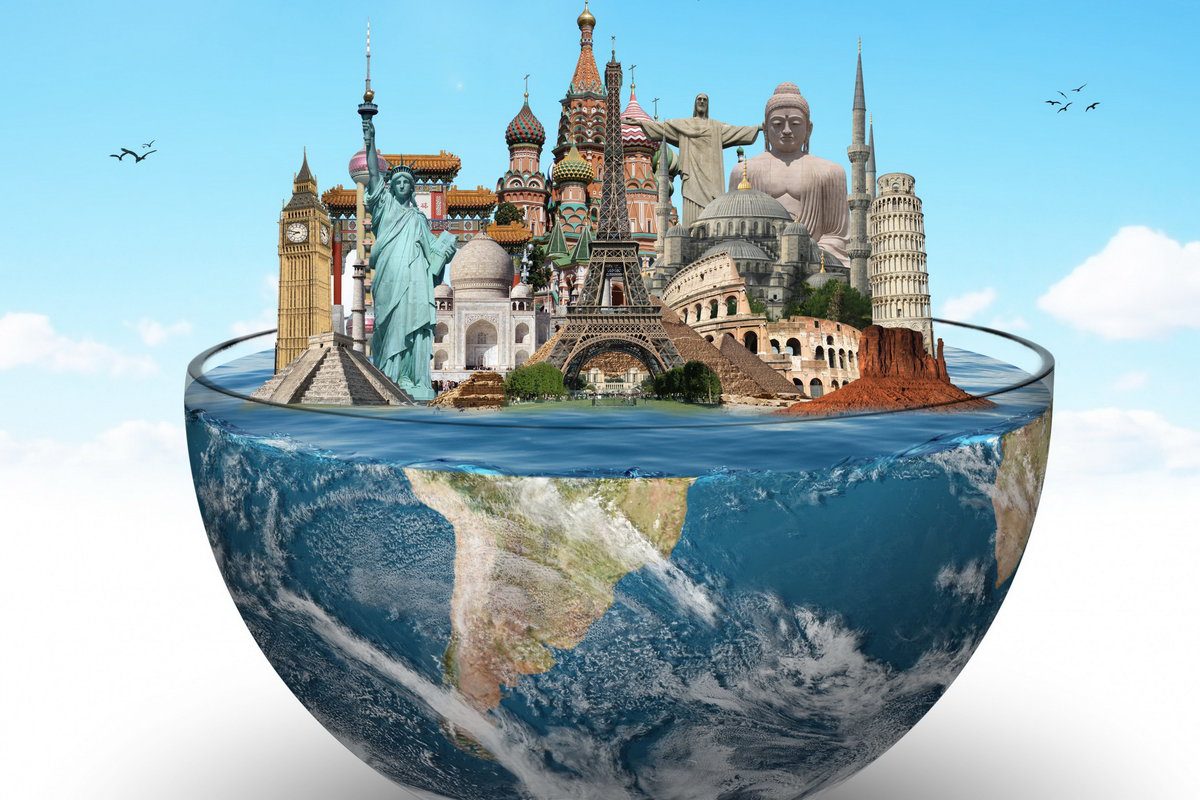Table of Contents
Wonders of the World
The wonders of the seventh world are the landmarks of the civilized travelers, a cart in the form of a list containing the most important creations made by man. The first list of wonders dates back to prehistoric times, as the Greek historian Herodotus (who lived in the fifth century BC (484 BC – 425 BC)), dubbed the father of history, compiled the first list in history that includes picturesque places And included several buildings, statues and cities, characterized by their large size and magnificence of their construction.
The choice of only seven wonders to be included in the list is of special importance and symbolism for the number 7 of the ancient Greeks, as it was used mainly in their religious rituals and magic rituals. In addition, the figure is related to the gods Athena, who is a symbol of wisdom, strength, and war in Greek mythology. Besides, the number 7 has distinctive mathematical properties that mathematician Pythagoras referred to.
The old list included places in a limited region only, where Herodotus lived in Turkey, and he was close to the civilizations that rose up in and near the east, and he was not able to travel and see other world civilizations. With the passage of time, all monuments were destroyed by natural factors, such as earthquakes and fires, or because of wars, and only one site survived. These reasons called for the formation of a new list that includes places from all continents of the world, and it still exists to this day.
The New Seven Wonders of the World
The new Seven Wonders of the World is a project launched by Swiss director Bernard Weber in the year 2000 AD, by creating a company for this purpose, and he called it the Open World Foundation, and the goal of establishing this company is due to voting on a list of places that the company set it, provided that it is from Building a person, and its construction was completed before the year 2000 AD, and it should be steadfast and present at the time of voting.
The company developed a list consisting of fifteen locations in the world and put them to vote on the whole world, then added six other sites to the list down at the desire of the public, to become the list contains twenty one. The company released the list and obtained an individual vote, and text messages were voted. At the end of the voting, the seven new wonders were announced on 7/7/2007.
It is worth noting that many official bodies and organizations, the most important of which are the UNESCO World Heritage Organization, protested this competition and its results; as the selection of new places was not subject to any scientific, historical, engineering, or any other criteria, but was subject to voting alone. , And reflects the opinions of a small group of people, not the entire world.
Great Wall of China
The Great Wall of China is of great importance and importance, as it is considered one of the most important World Heritage sites. The fence stretches over the northern and northwestern borders of China, and has a length of 8,850 kilometers. The construction of the fence dates back to before BC, specifically between the years 220-206 which was built by the first Chinese king Qin Shi Huang. The site is listed among the seven new wonders of the world, and it has become the focus of attention of tourists who have started arriving from everywhere. The Great Wall of China has occupied a military position throughout history; it is considered a military defense project and is a symbol of the Chinese nation.
Chichen Itza Pyramid
The Chichen Itza Pyramid is one of the most prominent and oldest monuments in Mexico. It was built by the Mayan civilization between the 9th to 12th centuries CE. The Chichen Itza pyramid is located in the north of the Yucatan peninsula in Mexico and was used as an observatory for tribal fighters and a temple for veterans. The temple was dedicated to the Mayan de Kokkulcan, which means snake with a feather. Each side of the temple holds 91 degrees, and the height of the building is 24 meters, in addition to 6 meters for the temple. The base of the pyramid measures 55.3 meters.
Christ the Redeemer Statue
The Brazilian city of Rio de Janeiro contains a huge statue representing Jesus Christ, peace be upon him, who is considered a symbol of the Christian community in all parts of the world. The statue was designed by French sculptor Paul Landowski, and it was built by Brazilian architect Hitor de Silva Costa between 1922 and 1931. The statue is located on the summit of Mount Corcovado, which is 700 meters long, and the statue is 30 meters long and weighs 635 tons. The statue has become a cultural symbol of the city, and of Brazil in general. At the base of the statue is a Romen Catholic Church, which Christians consider a symbol from which to draw strength.
Machu Picchu
Machu Picchu is a city located in Peru in the city of Cuzco, specifically alongside the Urubamba River. The history of the city dates back to the fifteenth century AD (1438-1472 AD), but its construction is of a modern and modern nature, comprising three main buildings; namely, Enti Wattana, the Sun Temple, and the Three Windows Room. The ruins of the city are located on a summit with a height of 2340 meters above sea level, and it was built for the king of the Inca people Bachacoti in 1450 AD, and is covered with dense tropical forests. It was discovered by chance by the third American explorer, Hiram Bingham, in 1911 A.D.
Petra
The city of Petra is located in the south of Jordan in the Wadi Araba, which is located in the Jordanian governorate of Ma’an. It is called the Rose City. The city has very beautiful architectural art, and it is characterized by urbanism carved in the rocks. The city was the capital of the Arab Nabateans in the past, as it was built by the Nabateans in 312 BC, as it was a major center of trade in the region because of its distinctive strategic location, which made it a major pathway for trade between civilizations in the past. The city was discovered by Swiss traveler and historian Joan Lewis Berckhart in 1812.
Colosseum
The Colosseum is located in the center of Rome, Italy, and is located to the east of the Romen Forum, known as the Flavian Amphitheater. It was built of concrete and stones, where construction began during the reign of Caesar Vespasian in 72 BC, and was completed by his heir Emperor Titus in 80 AD. It was called the Flavian Amphitheater on the construction of the Colosseum in honor and appreciation of the dynasty of the Flavian Emperors who had built this great building. The Colosseum was used for entertainment events, such as fights between fighters, animal wrestling, and public debates. An earthquake destroyed part of the Colosseum, but it still stands as a symbol of the Romen Empire to this day.
Taj Mahal
The Taj Mahal is located in India on the banks of the Yamna River in Agra. The Mughal Emperor Shah Jahan built the tomb of the Taj Mahal of white marble in 1632 AD, in commemoration of the memory of his wife Taj Mahal as a sign of his great love for her, and the name of the Taj Mahal was distorted from the distinguished name Mahal, the name of the princess. It is believed that construction work on the building was completely completed in 1653AD and required the employment of more than 20,000 workers and craftsmen to complete it. In the corners of the mastaba, symmetrical minarets were erected, surrounding each minaret with three terraces, to mediate the tomb-shaped quadrangle.
Video of the ancient seven wonders of the world
Learn about the ancient Seven Wonders of the World and their locations:








